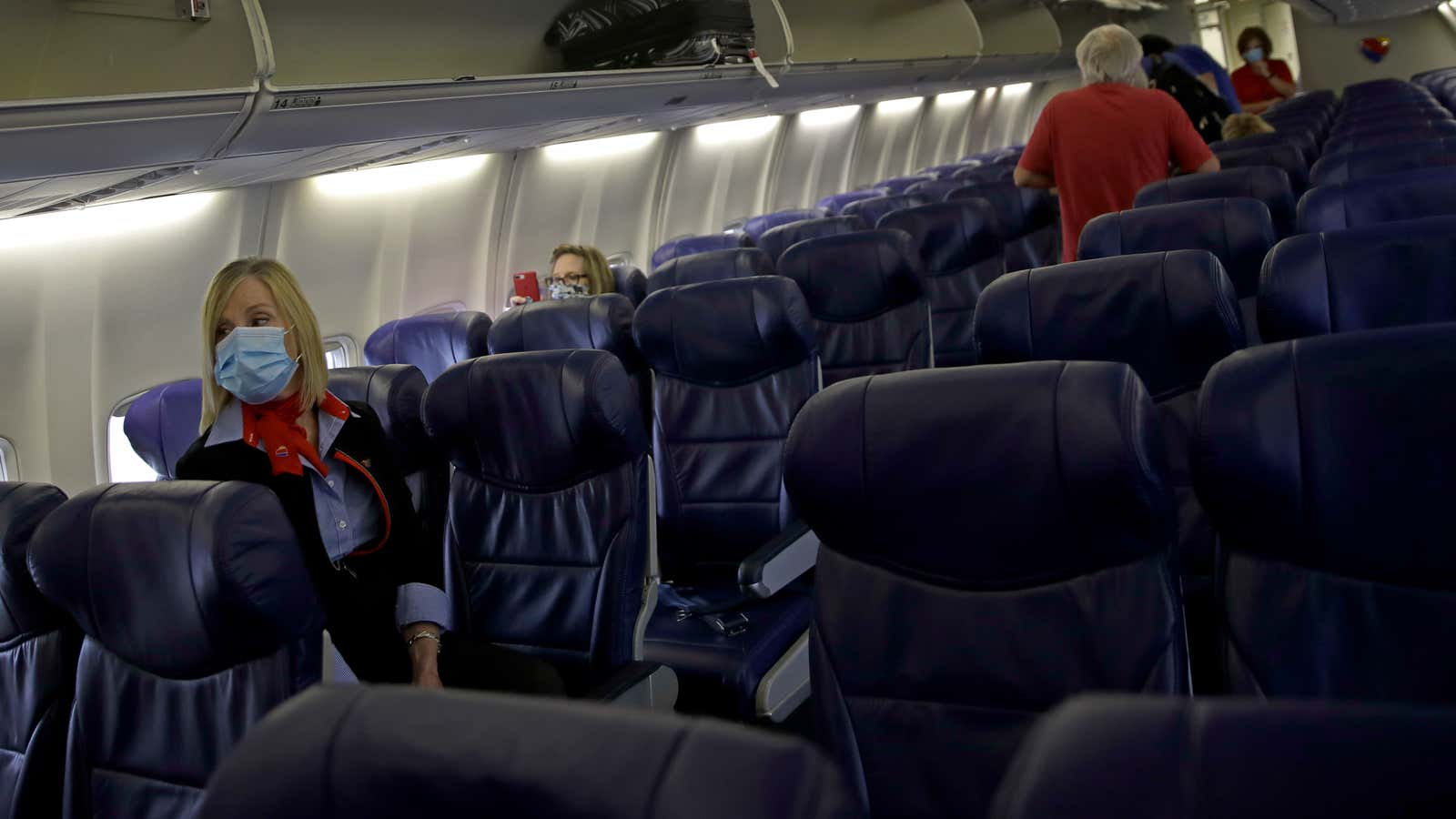The United States has more confirmed coronavirus cases and deaths than any country in the world, according to Johns Hopkins University researchers. It’s no surprise, then, that international tourism has plummeted.
Spending by foreign visitors in the US declined by 77% in April compared to the same month last year, and there is little hope that May or June will be much better. This isn’t just a loss for students and tourists hoping to check out the country. It’s also an economic problem: Tourism brings billions of dollars into the US each year, equal to more than a tenth of all its exports.
“Other countries are starting to think about resuming international travel,” Caitlin Rivers, a JHU epidemiologist tweeted this week. “The US will be seen as too risky. Another way we are losing economic ground by not controlling our outbreak.”
Already, states that depend on tourism have been found to have higher unemployment claims. Some 7.8 million Americans work in tourism and travel, and their jobs are at risk.
One hope is that Americans, reluctant to travel abroad themselves, will instead spend their vacation budgets on domestic trips. Still, it will be difficult to make up the gap while coronavirus is still prevalent—one analyst’s thought exercise found that the US could lose some $35 billion even if 100% of its foreign travel was redirected domestically.
The US does not have a federal test and trace effort to track the virus, and states and cities are offering contradictory advice about when different business activities will be permitted. Many states disregarded federal guidelines that they not resume normal activity until important conditions are met: that cases and positive test rates have fallen for two consecutive weeks, and that they have the ability to trace the spread of the virus and warn people who were potentially exposed.
Coronavirus cases in popular tourist states like New York, Nevada, California, and Florida all continue to rise. Regardless of whether governors allow businesses to re-open, travelers are likely to respond to reports of conditions on the ground; the plunge in travel spending in the US began in February, while the first official social distancing orders were issued in California on March 19.
